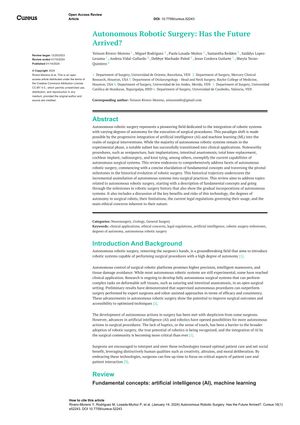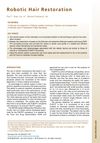Autonomous Robotic Surgery: Has the Future Arrived?
January 2024
in “
Curēus
”

TLDR Autonomous robotic surgery is advancing but still requires human supervision for complex procedures.
Autonomous robotic surgery, integrating AI and ML, is progressing with applications in venipuncture, hair implantations, and knee replacements. Historical milestones include the first surgical robot in 1985 and the ARTAS Robotic Hair Restoration System in 2005. The Smart Tissue Autonomous Robot (STAR) demonstrated superior performance in autonomous bowel anastomosis in 2016. Despite promising results, challenges such as handling complex procedures, perception, feedback, ethical, and legal issues persist. Current regulations advocate for human supervision in high-risk surgeries. The technology aims to assist rather than replace human surgeons, enhancing precision and consistency.





